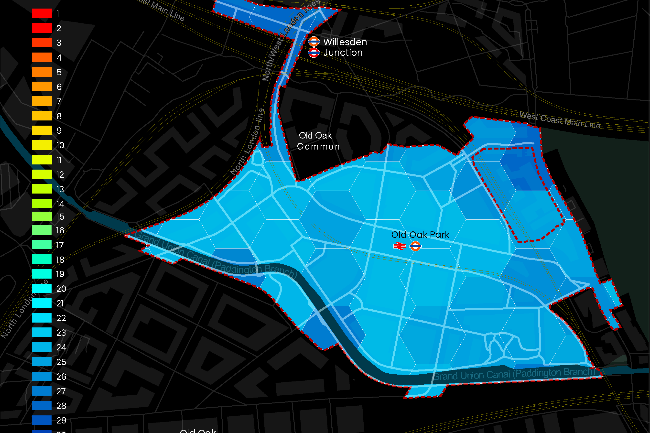
Old Oak Common - Accessibility & Connectivity Analysis

- Company: Spatial Design Hub
- Client: PLP Architecture
- Year: 2023
- Region: England
- Product: Urban Access
- Geographical information systems (GIS) and mapping
- Planning and urban design services
Introduction
Challenges
Poor Connectivity to Key Amenities – Residents had limited access to healthcare, education, and retail, with a liveability score of 20/30.
Fragmented Street Network – The existing road layout required enhancements to optimise traffic flow and pedestrian movement.
Need for Quantitative Evidence – The planning team required data-backed insights to measure and justify proposed improvements.
Solutions
Public Transport Accessibility – Modelled PTAL scores to evaluate transit improvements, increasing high-access coverage from 10% to 94%.
Proximity to Key Amenities – Conducted a 15-minute walkability assessment, leading to a 21% improvement in accessibility.
Street Network Optimisation – Used betweenness Centrality to analyse movement patterns and refine road layouts for better traffic and pedestrian flow.
Scenario Testing – Modelled alternative road alignments, ensuring the masterplan supports efficient connectivity and urban mobility.
Results
Better Walkability & Amenity Access – Accessibility to services increased by 21%, improving the liveability score to 25/30.
Enhanced Street Network – Scenario testing optimised key routes, improving traffic flow and pedestrian movement.
Data-Driven Decision Making – GIS analysis provided clear, measurable insights to guide masterplan refinements.
This project demonstrates the impact of spatial analytics in creating connected, accessible, and sustainable urban environments.
